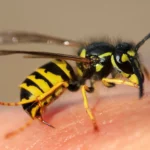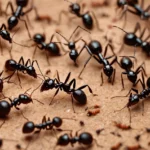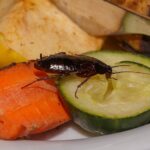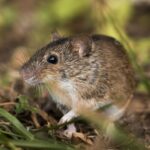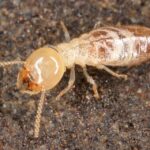Home » Pest Guide » Ants » Carpenter Ants
Carpenter Ants
Carpenter ants are one of the most destructive ant species found in homes and businesses. Unlike termites, they don’t eat wood — they tunnel through it to build their nests. Over time, these galleries can weaken walls, beams, and flooring.
Because they prefer moist or decaying wood, their presence is often a sign of water leaks or hidden structural problems. Early detection and professional treatment are essential to prevent extensive damage.
What Carpenter Ants Look Like
Carpenter ants are larger than most household ants, typically 6 to 13 mm long, and come in shades of black, red, or dark brown depending on the species.
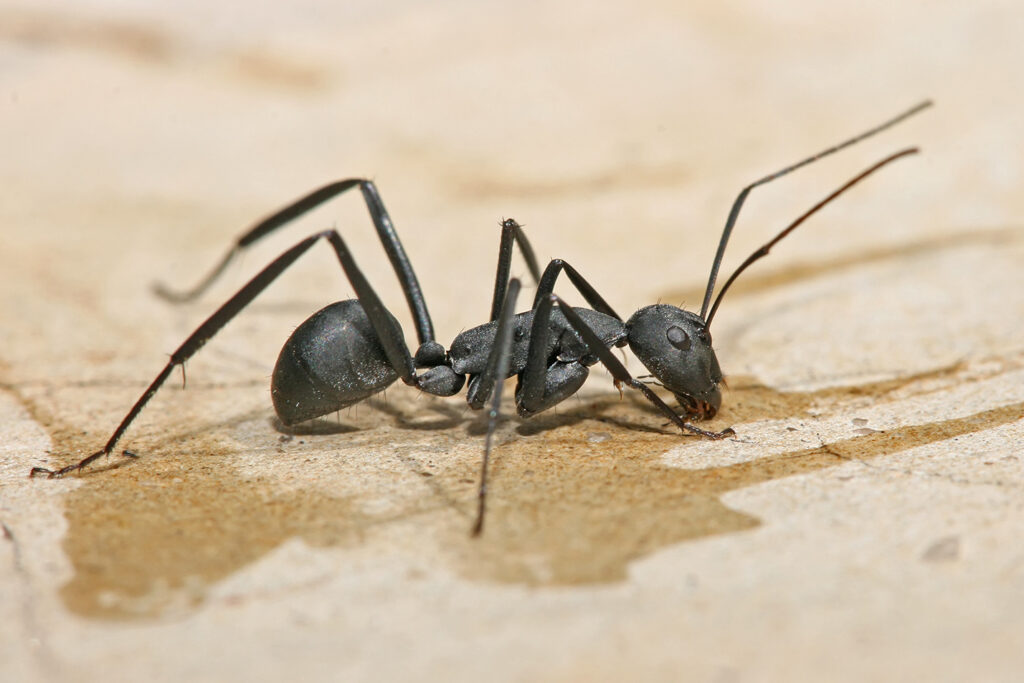
Key identifying features include:
- A single, distinct node between the thorax and abdomen.
- A smooth, rounded thorax when viewed from the side.
- Strong mandibles (jaws) used for chewing through wood.
- Winged swarmers (reproductive ants) appear in late spring or early summer.
Behavior and Nesting Habits
Carpenter ants form satellite colonies near their food sources and main colonies in moist, decaying wood — such as wall voids, window frames, attics, decks, and tree stumps.
They’re most active at night and can travel up to 100 yards from their nest in search of food.
Common nesting sites include:
- Hollow doors and window sills
- Wall voids near bathrooms or kitchens
- Wooden decks, fences, and tree trunks
- Attic beams or crawl spaces with moisture
Signs of a Carpenter Ant Infestation
- Rustling or faint tapping sounds inside walls at night.
- Sawdust-like material (frass) near baseboards, windows, or attics.
- Winged ants emerging indoors during spring.
- Small openings or cracks in wood with debris around them.
- Presence of large black ants trailing along walls, sinks, or wiring.
⚠️ If you notice frass (fine sawdust) and winged ants together, it’s a strong indicator of a mature carpenter ant colony.
Carpenter Ant FAQs
How do I tell carpenter ants from termites?
Carpenter ants have narrow waists, bent antennae, and wings of unequal length. Termites have straight antennae and equal-length wings.
Can carpenter ants damage my home?
Yes. Over time, their tunneling weakens structural wood, leading to costly repairs if untreated.
Are carpenter ants dangerous to humans?
They don’t sting but can bite when threatened. The real danger is structural — not physical.
How long does treatment take?
It depends on the colony’s size and nesting areas. Most infestations are controlled within 1–2 visits using non-repellent methods.
Will they come back?
With moisture control and preventive treatments, recurring infestations are rare. Ongoing maintenance plans keep colonies from returning.
Get Your Free Ant Control Quote
Carpenter ants can tunnel deep into wood and weaken your home’s structure. Our technicians specialize in identifying and eliminating colonies hidden behind walls or in damp timber.
Seeing ant activity around your home or business? Our licensed pest control specialists locate nests, eliminate entire colonies, and keep them from coming back. We use safe, targeted treatments that work for any type of ant — indoors or outdoors.
Don’t wait until the infestation spreads — request your free quote today and protect your property year-round.
Damage Caused by Carpenter Ants
Unlike termites, carpenter ants excavate wood to build tunnels rather than eating it — but the structural results can be just as severe. They weaken load-bearing beams, floors, and walls, especially in damp or untreated timber.
Common Damage Examples:
- Hollow-sounding or splintered wood.
- Sagging ceilings or soft wall sections.
- Door frames or windows that no longer close properly.
- Hidden galleries that worsen water damage.
💡 The longer colonies remain active, the more extensive the damage — which is why professional inspection is crucial.
How to Get Rid of Carpenter Ants
DIY Steps:
- Eliminate standing moisture and fix leaks.
- Replace damaged wood and improve ventilation.
- Use bait stations near trails instead of surface sprays.
- Trim branches that touch your structure.
- Store firewood at least 20 feet from the house.
Professional Treatment:
Carpenter ants can nest deep inside walls where sprays can’t reach.
Our trained technicians use non-repellent insecticides and colony bait systems to target ants at the source — including the queen — ensuring full elimination.
Prevention Tips
- Keep gutters and downspouts clear.
- Seal cracks, holes, and pipe openings.
- Remove tree stumps and decaying wood around your yard.
- Maintain low indoor humidity.
- Schedule an annual pest inspection, especially after heavy rain or storm damage.

When to Call a Professional
If you’re hearing faint tapping inside walls, finding frass piles, or seeing winged ants indoors, it’s time for a professional inspection. Carpenter ants can remain active for years, expanding colonies into multiple structures.
Our experts will locate the main nest, remove active colonies, and apply protective barriers to prevent re-infestation.
Do you have another Pest Issue?
What our Customers Say about Us!
Trustindex verifies that the original source of the review is Google. Great service for the price tbhTrustindex verifies that the original source of the review is Google. Goat services and didn’t have a problem ever sense.Trustindex verifies that the original source of the review is Google. Best service hands down!! As a first time customer, all I know is this they definitely got the job done and will be recommending them to everyoneTrustindex verifies that the original source of the review is Google. I been having a bugs everywhere and been terrified and they help me so much getting the bugs awayTrustindex verifies that the original source of the review is Google. Did an amazing job helping me with my ants .Trustindex verifies that the original source of the review is Google. I was having problems with my roaches in my house and they did a good job getting rid of emTrustindex verifies that the original source of the review is Google. this man does really good he killed all the pests in my house 😮🫡Trustindex verifies that the original source of the review is Google. Very accommodating for emergency service request. Also prompt in time for appointments. Great company!!Verified by TrustindexTrustindex verified badge is the Universal Symbol of Trust. Only the greatest companies can get the verified badge who has a review score above 4.5, based on customer reviews over the past 12 months. Read more


